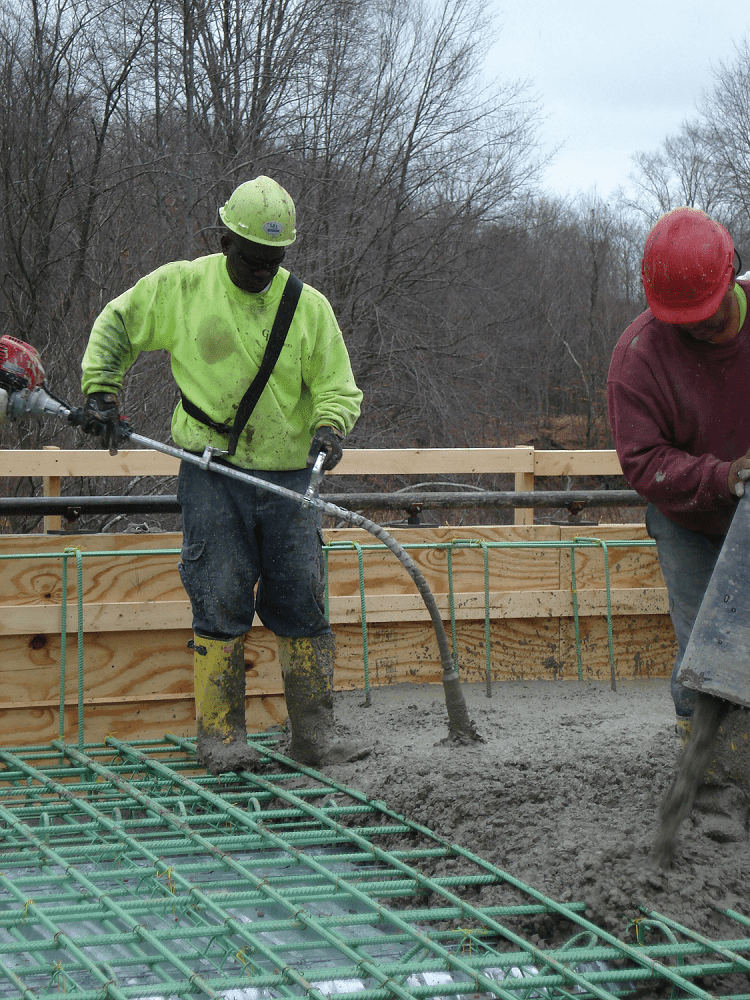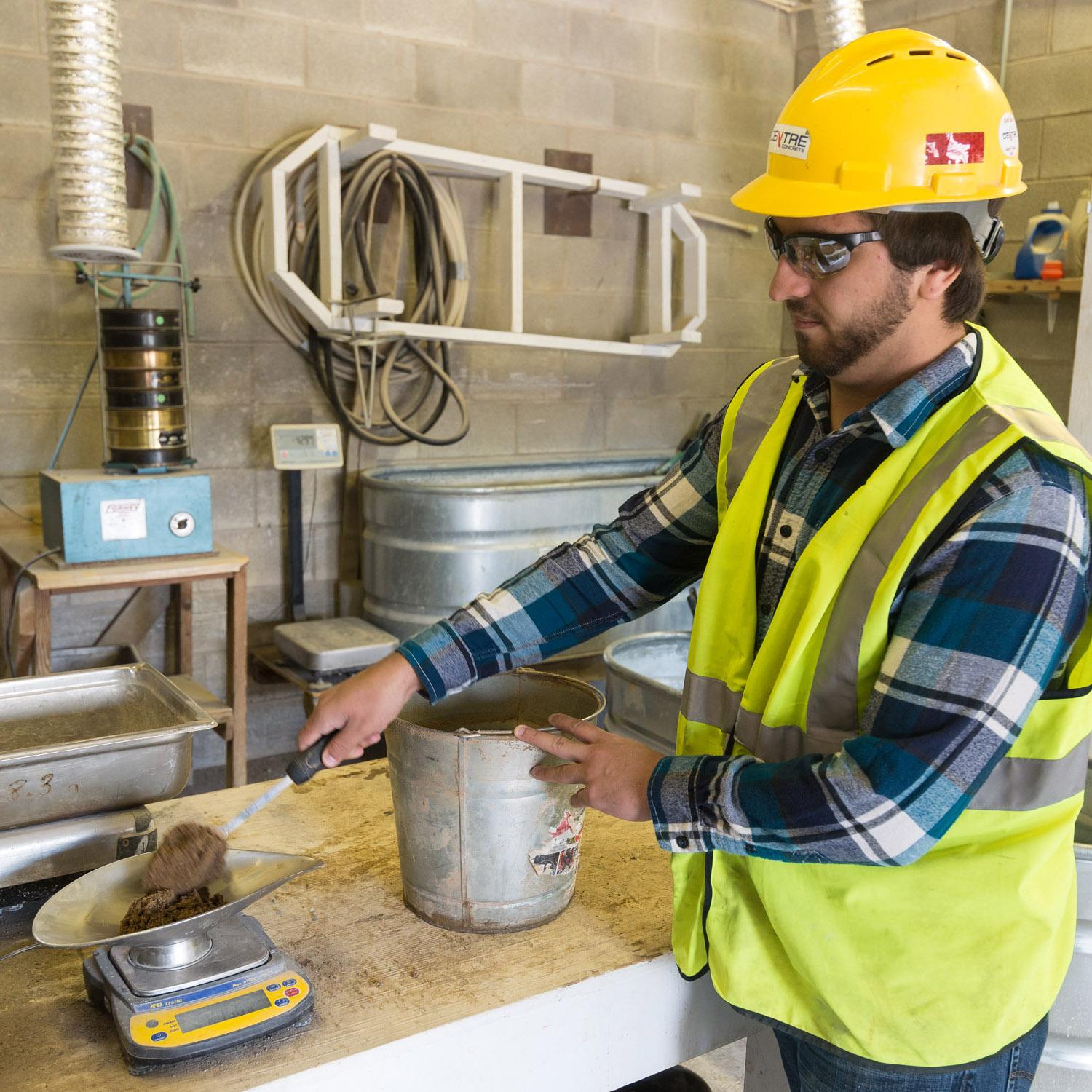The Important Duty of Concrete Foundation in Structural Honesty and Long Life
When it concerns constructing a residential or commercial property, the foundation is a lot more important than you might assume. Concrete foundations give unparalleled stamina and sturdiness, ensuring your structure can endure numerous environmental challenges. Without a strong base, you run the risk of prospective problems like changing or fracturing, which can endanger security and value. Understanding the nuances of concrete structures might be the key to protecting your investment for years to come. What should you take into consideration following?
Recognizing the Relevance of Concrete Foundations
Concrete foundations are important to the general stability of any framework, as they give the necessary assistance required to stand up to numerous lots and ecological conditions. When you consider developing a home or an industrial space, the structure is the first point you must consider. It works as a barrier against wetness, protecting your residential property from water damage. A well-placed concrete foundation also protects against settling and moving, which can result in splits in walls and floorings. You'll intend to guarantee that the structure is appropriately developed and reinforced, as this influences the longevity of your structure. Additionally, a strong foundation can boost power efficiency by lowering air leaks. Keep in mind, disregarding the significance of a concrete structure can lead to expensive repairs down the line. Spending in a high quality structure upfront is vital for the integrity and toughness of your framework.
Advantages of Concrete Foundations for Architectural Integrity
While numerous variables add to a building's structural integrity, concrete structures offer unequaled sturdiness and strength. You'll appreciate that concrete can hold up against severe weather, standing up to both moisture and temperature changes. This durability means your structure is less likely to experience splitting or changing with time, which can compromise its safety.Additionally, concrete's intrinsic weight supplies a strong base, protecting against motion during natural events like quakes or floods. When you select a concrete structure, you're additionally going with reduced upkeep; unlike timber, it will not rot or bring in parasites, conserving you money and time in repairs.Moreover, concrete's fire resistance supplies included safety, ensuring your structure can endure heats without considerable damages. Generally, purchasing a concrete foundation means you're prioritizing the long-term stability and honesty of your structure, making it a sensible option for any type of building and construction job.
Typical Kinds Of Concrete Foundations
When it comes to building foundations, recognizing the typical types of concrete structures can assist you make educated options for your project. One of the most common types consist of slab-on-grade, crawl space, and complete cellar foundations.A slab-on-grade structure is a basic, affordable option, where a thick concrete piece is poured directly on the ground. This type works well in cozy climates, as it lessens warm loss.Crawl space structures raise the home slightly over ground, permitting air flow and accessibility to plumbing and electric systems. This design can aid avoid dampness issues.Full basement structures offer added living or storage space while giving exceptional structural assistance. They need even more excavation and are generally made use of in colder environments to stop frost heave.
Aspects to Think About When Designing a Concrete Foundation

Best Practices for Setting Up Concrete Foundations
When you're installing a concrete foundation, correct website prep work is vital to assure security (WCGE commercial concrete). You'll also need to recognize support methods to enhance stamina and resilience. Do not overlook the curing process, as it plays an essential duty in attaining a solid foundation.
Site Prep Work Importance
Although it may seem straightforward, proper website prep work is essential for assuring a solid and resilient concrete foundation. Begin by clearing the location of any type of debris, greenery, or organic material that could compromise the foundation's integrity. Next off, analyze the soil type and compaction; you could require to dig deep into or add products to produce a stable base. Degree the ground to assure also weight distribution and avoid resolving problems in the future. Installing appropriate drainage systems is additionally vital to avoid water build-up, which can weaken the structure in time. Mark out the foundation's measurements properly to assist the pouring procedure. By complying with these steps, you'll establish the stage for an effective concrete foundation that stands the test of time.
Support Techniques Described
Once the website is correctly prepared, the next action in assuring a sturdy concrete foundation includes executing reliable reinforcement methods. You must start by utilizing steel rebar, which offers tensile toughness and assists prevent fracturing. Lay the rebar in a grid pattern, making certain it rises making use of spacers to keep proper coverage. In addition, think about making use of cable mesh for added support, specifically in areas based on hefty tons. Don't neglect to tie the rebar intersections safely with cable. For bigger foundations, fiber support can enhance toughness, reducing the risk of shrinking fractures. Always adhere to neighborhood building regulations and guidelines to ensure compliance. By using these support techniques, you'll substantially increase your structure's toughness and long life, laying a strong foundation for your framework.
Treating Refine Basics
To assure your concrete structure cures properly, it is very important to keep adequate wetness and pop over to these guys temperature level problems right away after pouring. Begin by covering the surface with a damp burlap or plastic sheeting to keep dampness. This maintains the concrete moisturized, avoiding fractures and making certain toughness. You need to additionally keep track of the temperature level; excellent healing conditions are between 50 ° F and 90 ° F. If it's too hot, mist the surface area concrete stone consistently to avoid quick dissipation. For chilly climate, think about using protecting coverings to keep warmth. Go for a curing duration of at least 7 days, as this is crucial for optimum toughness growth. By adhering to these finest methods, you'll boost your foundation's longevity and durability, making sure structural honesty for many years to find.
Maintenance of Concrete Structures for Long Life
To keep your concrete foundation solid and long lasting, normal assessments are important. You must also guarantee reliable drainage solutions are in area to avoid water damage. If you find any splits, addressing them without delay will conserve you from bigger troubles down the line.

Regular Assessments and Assessments
While routine examinations and assessments may appear like a chore, they're important for preserving the integrity of your concrete foundation. By regularly examining for splits, changes, or indicators of wear, you can capture prospective problems before they escalate right into costly repairs. Seek any type of water merging around the structure or unusual settling, as these can signify underlying issues. It's likewise smart to keep an eye on any type of modifications in your home's framework, like doors that stick or windows that don't open efficiently. Maintaining a record of your evaluations assists track adjustments with time, permitting proactive maintenance. Inevitably, these evaluations ensure your foundation continues to be steady, sustaining the durability and security of your whole framework. Don't ignore this important facet of homeownership!
Reliable Water Drainage Solutions
Regular examinations can expose issues like drainage problems that could endanger your concrete structure's security. To avoid water accumulation, ensure your gutters and downspouts direct water away from the structure. Installing French drains pipes can successfully redirect surface and groundwater, reducing stress on your foundation walls. Furthermore, rating the dirt around your home assists assure that water moves away, rather than merging near your foundation.Consider using sump pumps in areas vulnerable to flooding, as they actively get rid of excess water. Frequently examine for blockages in water drainage systems and clear them promptly. You'll secure your foundation's honesty and durability by taking these proactive actions. Keep in mind, efficient water drainage options are important for keeping a solid, resilient concrete structure.
Trigger Crack Services
When you discover cracks in your imp source concrete structure, addressing them immediately is essential for maintaining its longevity. Small cracks can quickly evolve right into bigger issues, jeopardizing the architectural honesty of your home. Regularly inspect your foundation for indications of damage, such as horizontal or upright cracks. If you find any type of, do not wait-- repair them right away. You can use epoxy injections or concrete patching substances, which work for sealing cracks. Always comply with the producer's directions and take into consideration speaking with a specialist for significant damage. Keep in mind, prompt repair work not just improve your foundation's sturdiness however likewise save you money over time by avoiding a lot more considerable repair work down the line. Remain aggressive, and your structure will certainly stay strong and protected.
Dealing With Common Concerns With Concrete Structures
Concrete structures can deal with various problems over time, making it important to determine and address them without delay. One of one of the most common issues is cracking, which can happen due to temperature variations or settling dirt. If you observe cracks, it's necessary to evaluate their dimension and depth; tiny fractures can frequently be secured, while bigger ones may need specialist evaluation.Water intrusion is another major worry. Excess moisture can result in mold and mildew development and structural wear and tear. Warranty appropriate water drainage around your foundation to alleviate this threat. Additionally, try to find signs of changing or bowing walls, as this can indicate underlying concerns with your foundation's stability.Regular evaluations are essential to capture these troubles early. If you spot any concerning indications, do not think twice to consult a structure expert. By staying aggressive, you can maintain the integrity and longevity of your concrete foundation, guaranteeing your home stays risk-free and safe.
Regularly Asked Questions
Exactly How Does Dirt Type Influence Concrete Structure Performance?
Dirt type greatly influences concrete foundation efficiency. If you have actually got large clay, for instance, it can cause moving and breaking. Sandy dirt may lead to resolving. Comprehending your dirt assists assure a steady structure.
Can Concrete Foundations Be Repaired if Harmed?
Yes, you can repair damaged concrete foundations. Depending upon the level of the damages, strategies like epoxy shot or piece jacking can bring back stability. It's finest to consult a specialist for effective services.
What Is the Common Lifespan of a Concrete Structure?
A concrete foundation usually lasts 30 to 100 years, depending upon aspects like dirt problems, environment, and maintenance. You'll intend to maintain an eye on it to ensure it stays healthy throughout its life expectancy.
Exist Option Materials to Concrete for Foundations?
Yes, there are options to concrete for foundations, like steel, hardwood, or even recycled materials. Each choice has one-of-a-kind advantages and drawbacks, so you need to consider your job's specific demands when picking the appropriate product.
How Does Environment Effect Concrete Structure Resilience?
Environment significantly affects concrete structure sturdiness (West Coast General Engineering industrial concrete). Severe temperature levels, wetness, and freeze-thaw cycles can compromise the product, bring about splits and structural issues. You should consider neighborhood environment problems when planning your foundation to assure long-term efficiency